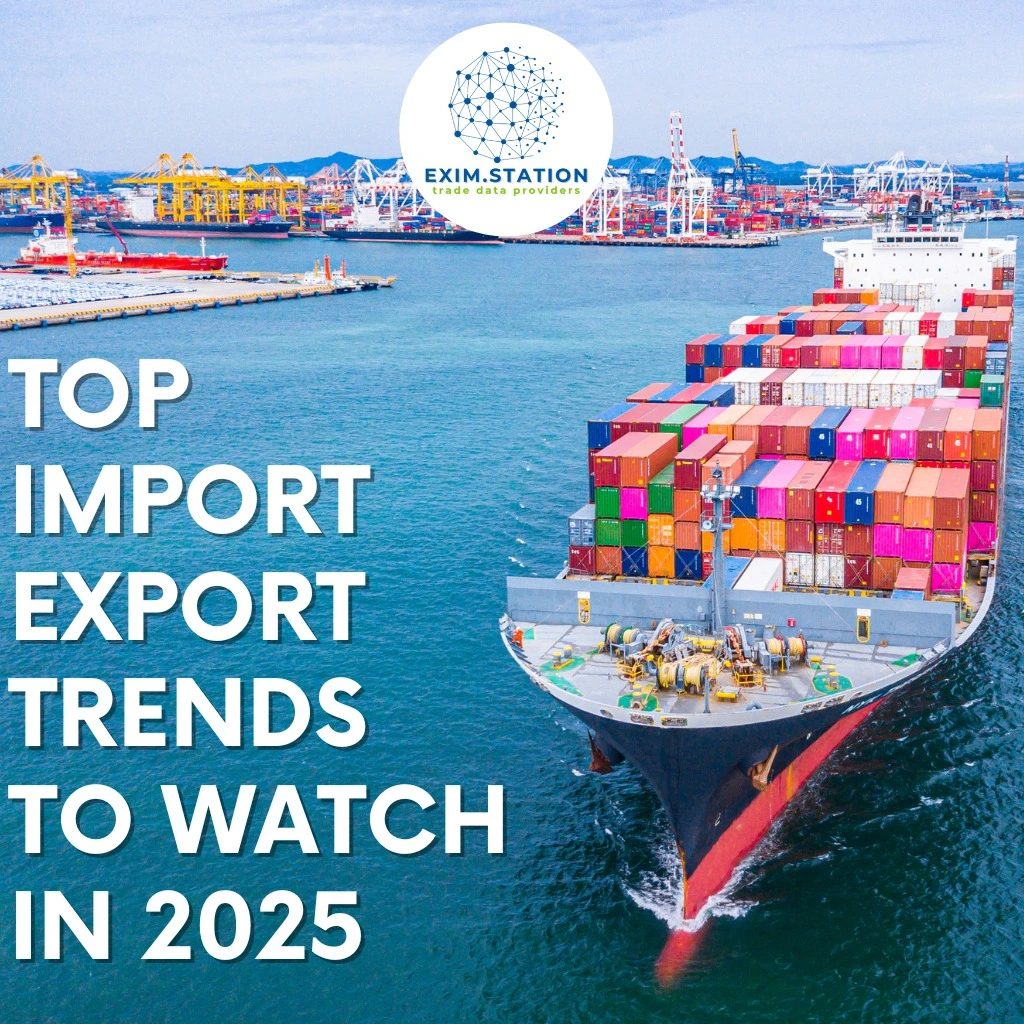Key Shifts in Global Trade Patterns, New Export Markets, and the Impact of AI & Sustainability

As we enter 2025, the global import-export landscape is undergoing significant transformations. From changing geopolitical alignments to the rapid adoption of Artificial Intelligence (AI), several factors are shaping the future of international trade. Businesses, traders, and policymakers must stay ahead of these shifts to remain competitive and resilient. The top import-export trends of 2025 include emerging new markets, AI in trade, and sustainability-driven exports.
Here’s a detailed look at the top import-export trends to watch in 2025:
1. Shift in Global Trade Powerhouses
In recent years, the traditional dominance of Western markets has started to evolve. Asia and Africa are becoming new centers of trade activity. According to WTO data, Southeast Asia’s share in global exports rose by over 5% between 2020 and 2024, driven by increased manufacturing capabilities and digital infrastructure.
India, Vietnam, Bangladesh, and Indonesia are emerging as key exporters in sectors like electronics, garments, and pharmaceuticals. Simultaneously, Africa’s intra-continental trade, fueled by the African Continental Free Trade Area (AfCFTA), is opening up new regional export opportunities.
2. Rise of Non-Traditional Export Markets
2025 is witnessing a boom in non-traditional markets. Latin American countries like Colombia, Peru, and Chile are becoming attractive destinations for sectors like agri-exports, processed foods, and green energy components.
Similarly, Eastern European countries—once largely importers—are now becoming niche exporters of software services, industrial machinery, and raw materials, especially to Asian and African markets.
Why this matters: Diversifying your target markets can reduce risk and open up untapped opportunities.
3. Disruptions from Geopolitical Tensions
From the Red Sea crisis affecting maritime cargo routes to ongoing trade frictions between China and the West, 2025 continues to be shaped by geopolitical tensions. These events have real-world implications:
- Increased freight costs (some routes surged by 40% in early 2025)
- Port congestion and shipment delays
- Rising insurance premiums for certain regions
Smart traders are now investing in supply chain diversification and using trade intelligence tools to monitor risk in real time.
4. AI is Revolutionizing Trade Operations
AI is no longer a buzzword—it’s transforming how we trade. In 2025, we’re seeing:
- AI-powered demand forecasting for importers and exporters
- Automated customs and documentation processing
- Real-time risk analysis for trade routes and partners
Platforms like Flexport, TradeLens, and EXIM Station are integrating AI to offer smarter, faster decisions. Companies adopting these tools are gaining a significant edge in terms of cost efficiency and compliance.
5. Sustainability Is Driving Trade Choices
With increasing global pressure to reduce carbon emissions, sustainability has become a key concern. Many European and North American buyers now require Environmental, Social, and Governance (ESG) compliance from exporters.
In 2025, major trade agreements (such as the EU’s CBAM – Carbon Border Adjustment Mechanism) are directly linking carbon output to import duties. Exporters who adapt to cleaner energy, eco-friendly packaging, and traceable supply chains are already seeing higher demand and better pricing.
6. Digital Trade Agreements & Paperless Borders
With trade becoming increasingly digital, digital trade agreements are replacing legacy systems. Agreements like the Digital Economy Partnership Agreement (DEPA) are enabling smoother, paperless cross-border trade.
Countries like Singapore, New Zealand, Chile, and South Korea are leading the way, and others are following. Expect 2025 to be a turning point for blockchain-based documentation, digital certificates of origin, and real-time shipment tracking.
7. Data-Driven Trade Decision Making
Companies are no longer relying solely on instincts or local brokers. The trend in 2025 is toward data-backed decision-making. Businesses are using import-export data platforms to:
- Find new buyers/suppliers
- Analyze HS code trends
- Study competitor movements
- Track country-wise demand/supply gaps
If you’re not using trade data yet, 2025 is the year to start.
Final Thoughts: Stay Agile, Stay Ahead
The import-export industry in 2025 is fast-paced, tech-driven, and increasingly influenced by sustainability and geopolitics. Whether you’re a seasoned exporter or just stepping into global trade, staying informed and agile is the key to long-term success.
